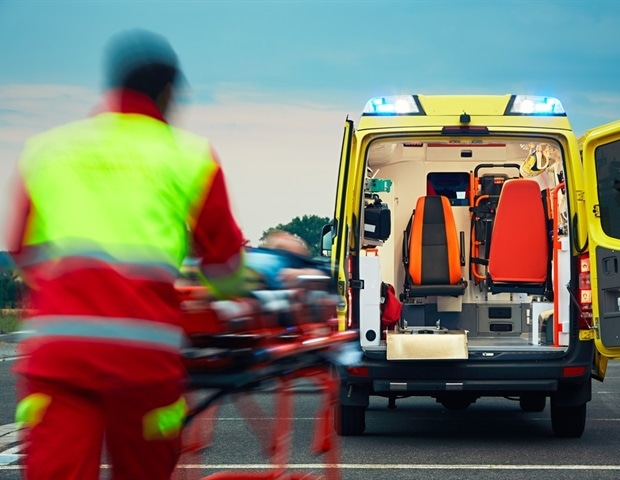Helga Paris and Halle, that’s a special story. The photographer never lived there, but she created the most comprehensive cycle of images about the city: in the mid-1980s, when Paris’ daughter Jenny was studying in Halle. These black-and-white photos of a decaying GDR city were not allowed to be shown publicly at the time, even though the “Houses and Faces” catalog had already been printed; after repeated postponements of the associated exhibition, however, it was withdrawn. The Peaceful Revolution of 1989 made exhibitions and catalog sales possible in the following year, the photo series and Halle became famous as “Diva in Grey”, and from then on Helga Paris was a fixture in the city.
But her actual place of work was Berlin, where Helga Steffens, born in 1938, came as a refugee child from Pomerania, studied fashion design, married the painter Ronald Paris and trained as a photographer in her late twenties. The couple belonged to the artist scene in Prenzlauer Berg, and Helga Paris maintained close friendships, especially with writers such as Elke Erb, Christa Wolf and Sarah Kirsch. This resulted in photos that not only document living conditions, but also life difficulties. And personal affection. But they remained unknown as a group of works for a long time because Helga Paris was considered an important protagonist of street photography in reunified Germany thanks to the Halle cycle. When her volume “Künstlerportraits” was published last year, people were amazed.
It is even greater in view of the exhibition “Seeing Again” that the Kunstverein Talstrasse is now staging for Helga Paris and her environment – in Halle, not in Berlin, although it is mainly about the Berlin circle. Around sixty photographs form the starting point of the show, but unfortunately they are only assembled at the end of the course, on the second floor. A panopticon of non-conformist GDR art unfolds there with protagonists such as Heiner Müller, Cornelia Slime, Helmut Brade, Günter de Bruyn, Katja Lange-Müller, Carlfriedrich Claus, Ursula Scheib, Adolf Endler and Bert Papenfuss and at locations such as Hans Scheib’s studio or the salon by Ekkehard Maass. Incidentally, Sascha Anderson was always there in group pictures – as if as a reminder that there were no protected areas in the GDR.
The photos of Helga Paris are accompanied by the works of the portrayed artists
On the first floor, however, the show offers works by ten artists from Paris’ environment, which are arranged around the respective portraits from the 1970s and 1980s. The selection is not representative, the best-known is probably Harald Metzkes, the most unusual are Charlotte E. Pauly as a member of an older generation (born in 1886), who at almost ninety found recognition in the GDR, and Núria Quevedo, who was the same age as Paris, who came to East Berlin in 1952 as the daughter of Spanish exiles. Most of the careers of those on display experienced a break after 1989, most tragically in the case of Christa Böhme, who took her own life in 1991. Her large-format, expressive paintings, which often deliberately allow canvas or ground to shine through, are the most impressive works in the exhibition.

Self-portrait by Christa Böhme, painted in 1980
:
Image: Kunstverein Talstrasse
With his longing for Spain, Ronald Paris is again the most colorful in the otherwise rather muted artistic work of Prenzlauer Berg, which found exactly the right portraitist in the black and white master Helga Paris: cool in the style, spontaneous in the choice of moment. Most of the shots were taken in the studios, and there are few proud glances at the camera; the artists are mostly immersed in their work or caught in tiny pauses for reflection. The photos usually triumph over their own works.

Based on personal experiences as a child of Spanish exiles: Núria Quevedo’s 1973 painting “Pietá”.
:
Image: VG Bild-Kunst, Bonn 2022
This is also due to the fact that it has hardly been possible to obtain works from the time the photographs were taken for the exhibition. Most of them come from much later work phases, in the case of Charlotte Pauly also from much earlier phases, and so the portraits of the artists and their certificates of work do not go into each other – the only connection remains the respective personality, and its capture is made more difficult by the fact that all biographical Information in the show can only be obtained using QR codes. The exhibition itself is devalued by constantly staring at one’s own smartphone – a problem that is currently common when the use of media is only based on practicality considerations, not aesthetic ones.
But there would still be a pleasantly complex catalogue. Unfortunately, however, he does without the larger part of the Helga Paris photos and thus focuses on the other artists, of whom only those works that are too late or too early for the context of acquaintance are included, which can also be seen in the exhibition are. As beautiful and interesting as the approach is, the execution is unsatisfactory.
See you again – Berlin artists meet Helga Paris. In the art association Talstraße, Halle; until February 5, 2023. The catalog costs 29.90 euros.









